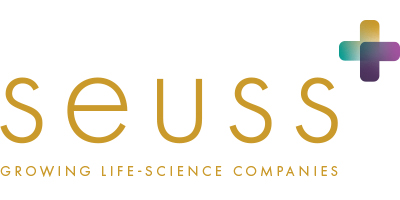Bad Hires and Bottom Lines: What Are the Real Costs of Employee Turnover?
Many decision-makers and hiring managers in the life sciences industry ask (and rightly so!) why does pharma recruitment cost what it costs? What are you really paying for? Of course, there is the obvious. You are paying for the network of life sciences professionals that the agency has, and you are paying for people to comb through the existing network and/or create new networks to find and engage potential new employees. Ideally, you have hired recruiters who are true career matchmakers and who support you and the candidates throughout the candidate process. So yes, there is a cost of hiring the right person!
Yet, there is also the costs of hiring the wrong person.


How Much Does Employee Turnover Cost You?
Companies often invest considerable time in advertising a new opening, interviewing candidates, hiring the right person, and training him or her. The cost of time and money depends on the level of expertise needed, but the whole process might end up costing you six to nine months’ salary.The higher the level of expertise, the higher the cost. This is very relevant for the life sciences industry because the high-level competencies required and knowledge needed are very niche, thus the costs can be even higher.
So, what exactly is the breakdown of these cost of employee turnover to your organization?
Advertising and Interviews
When you start the hiring process, advertising is the first major expense you incur. There are traditional paid online job boards, but sifting through (potentially) hundreds of uninteresting CVs of unqualified candidates is not only daunting, but it also costs huge amounts of time (and as we all know, time costs money). Even if jobs are advertised on social media, which can be cheaper, it still might result in hundreds of useless CVs. If a business suffers from high turnover, over time, serially advertising for multiple positions again and again will ultimately negatively impact your bottom line.
After advertising and identifying candidates, interviews are the next step.
Management may dedicate a significant amount of time interviewing (phone screens/skype calls, first interviews, second interviews, panel interviews, etc.), which results in lost productivity if the candidates are ultimately unsuitable. The company may also incur unanticipated monetary expenses such as travel costs for out-of-town candidates. Again, if turnover is very high and your team is continuously interviewing for the same position every year, these costs do add up.
Using a Recruiter
Many companies shy away from using a recruiter due to costs. However, considering the aggregate costs to a company of keeping all recruiting activities in-house, you will find a recruiter can save you money in the long term.
A recruiter that specializes in your industry has the contacts and CVs on file and the expertise to determine if that person is truly a solid fit, that can help make that perfect match between a business and an employee. They can pre-screen hundreds of applicants and generally make the entire process go smoother and more efficiently. Bonus: with Seuss Recruitment, we strive to send you only 2-3 top-level candidates, each with a full profile detailing personality and relevant experiences.
An experienced and knowledgeable life sciences recruiter understands the motivations and desires of bioscience professionals. You save a significant amount on management time and lost productivity by letting a recruiter handle everything for you.
New Employee Productivity
Training a new hire can take as long as two years before he or she becomes fully productive. In the fast-changing world of clinical research and scientific and medical innovation, re-training is a must. But new employees are not the only ones affected by reduced productivity. If turnover is unusually high, remaining employees may have morale issues and lose focus. This is not easy to quantify, but the impact of employee turnover on the company’s morale is usually the first thing you notice.
A high voluntary turnover rate can trigger unease (and extra work designated) among employees and could potentially result in waves of personnel resigning within a short period. However, leaving the position unfilled for weeks or months is dangerous and costly. This, in turn, also has downstream effects of lost productivity for your company, which is why many companies resort to panic hires.
The Perils of Panic Hires
Very often, companies resort to panic hires. An essential member of your team leaves, so productivity begins to suffer. You quickly recruit a replacement, rather than taking the time to vet the hire properly. A ‘panic hire’ can take more time to train, may end up costing the company too much time and money. These panic hires rarely work out and add to the long-term costs of employee turnover.
The Solution? Don’t panic. Find the balance between the cost of outsourcing and the cost of doing your hiring internally. Outsourcing your hiring needs to someone with the appropriate expertise will help ensure you get a much higher chance of finding the right fit. Recruitment specialists can assist you in determining the motivators to attract the right candidate for the position. They will activate their contact network and advertise in all the right places. By the time the candidates get to you, you can rest assured they will be quality matches for the position.
Contact Seuss recruitment (+31(0) 20 29 00 016 or email: talktous@seussrecruitment.com) and let us put our decades of helping pharmaceutical, biotech, and CRO companies to work helping you hire the right person for the job.

 Should You Join a Biotech Start-Up?
Should You Join a Biotech Start-Up?
 Hire for Attitude, Train for Skill
Hire for Attitude, Train for Skill
 How to Find Out When Life-Science Job Candidates Are Lying
How to Find Out When Life-Science Job Candidates Are Lying
 Keeping it Real: How (and Why) to Be Authentic in Job Interviews
Keeping it Real: How (and Why) to Be Authentic in Job Interviews
 Why recruiting for your own company is difficult
Why recruiting for your own company is difficult